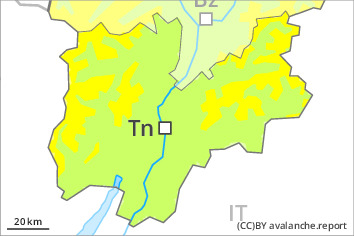
Danger level
 | 2200m |
|  |
|  | ||||
|  |
|  |

Weak layers in the old snowpack necessitate caution.
In some places avalanches can be triggered in the weakly bonded old snow. The avalanche prone locations are to be found in particular on steep west to north to east facing slopes above approximately 2200 m, this also applies on steep sunny slopes at elevated altitudes. Caution is to be exercised at transitions from a shallow to a deep snowpack. Avalanches can in isolated cases reach medium size.
The mostly small wind slabs of the last few days are to be evaluated with care and prudence in particular on very steep shady slopes, especially adjacent to ridgelines and in pass areas at elevated altitudes.
In regions neighbouring those that are subject to danger level 3 (considerable) and in high Alpine regions the avalanche prone locations are more prevalent and the danger is slightly greater.
Only isolated gliding avalanches and moist snow slides are possible, but they will be mostly small.
Snowpack
dp.1: deep persistent weak layer
Towards its base, the snowpack is faceted, especially on steep west, north and east facing slopes above approximately 2200 m, as well as on steep sunny slopes at elevated altitudes.
The fresh wind slabs are lying on weak layers in particular on shady slopes at elevated altitudes.
Towards its surface, the snowpack is hard and its surface has a melt-freeze crust that is not capable of bearing a load. This applies in particular in the south on steep sunny slopes below approximately 2600 m.
Tendency
Weakly bonded old snow requires caution.

